BREASTSTROKE PULLOUT 101 (HOW CHAMPIONS DO THE BREASTSTROKE PULLOUT)
It's well known that the fastest breaststrokers have one of the longest and strongest pullouts. The breaststroke pullout is the underwater sequence that happens after your start or turn, before you begin your regular strokes. Why does it matter so much? Because champions know exactly when to pull and how to position their bodies to reduce resistance and increase speed.
With the right technique (and a little practice), you can be the one who breaks the surface ahead of the competition. This lesson will break down the entire sequence step-by-step.
Dive Into: The Champion's Breaststroke Pullout
- 🎥 Watch: Breaststroke Pullout Step-by-Step
- Step 1: Push Off the Wall
- Step 2: Streamline Position
- Step 3: Dolphin Kick
- Step 4: The Pull
- Step 5: The Shoulder Shrug
- Step 6: Arm and Leg Recovery
- Step 7: Surfacing Smoothly
- 🎥 Watch: An Olympic Champion's Pullout
- Frequently Asked Questions
🎥 Watch: Breaststroke Pullout Step-by-Step
Before we dive into the details, watch this quick video breakdown of the full pullout sequence.
I'll explain each step below.
Step 1: Push Off the Wall
Everything starts with a powerful, clean push-off.
You want a quick, explosive start that launches you straight and streamlined from the wall or block.
Think compact power, not chaos - a strong glide sets up everything that follows.
Step 2: Streamline Position
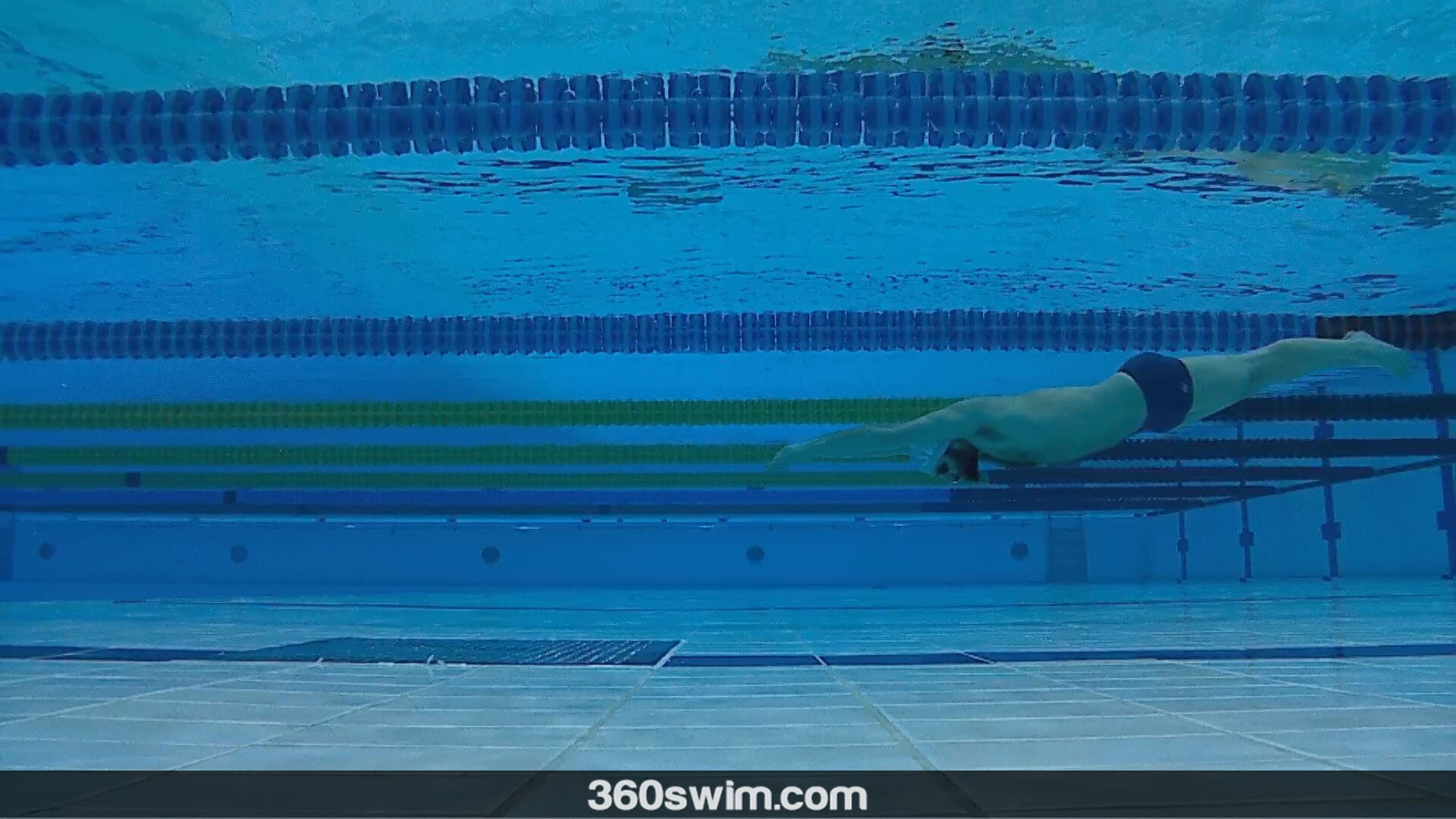
Once you've pushed off, lock into a perfect streamline.
- Arms extended above your head
- Hands stacked, top thumb locking them together
- Biceps squeezing your ears
- Legs and feet tight together
Your body should form one long line with minimal curve in the lower back.
When we walk, our spine naturally arches, but underwater, that arch creates drag.
To practice: lie on your back, press your lower back flat against the ground, then raise your arms overhead without letting the gap return.
Once this becomes second nature, your streamline will glide farther and feel effortless.
Learn more in Streamline Explained.
Step 3: Dolphin Kick
While still in streamline, add one strong, fast and snappy butterfly-style dolphin kick to carry momentum off the wall.
Think of it as a quick, controlled snap of the hips and legs, like a whip or fly swatter motion.
This small, well-timed kick gives you extra distance without breaking form.
Step 4: The Pull
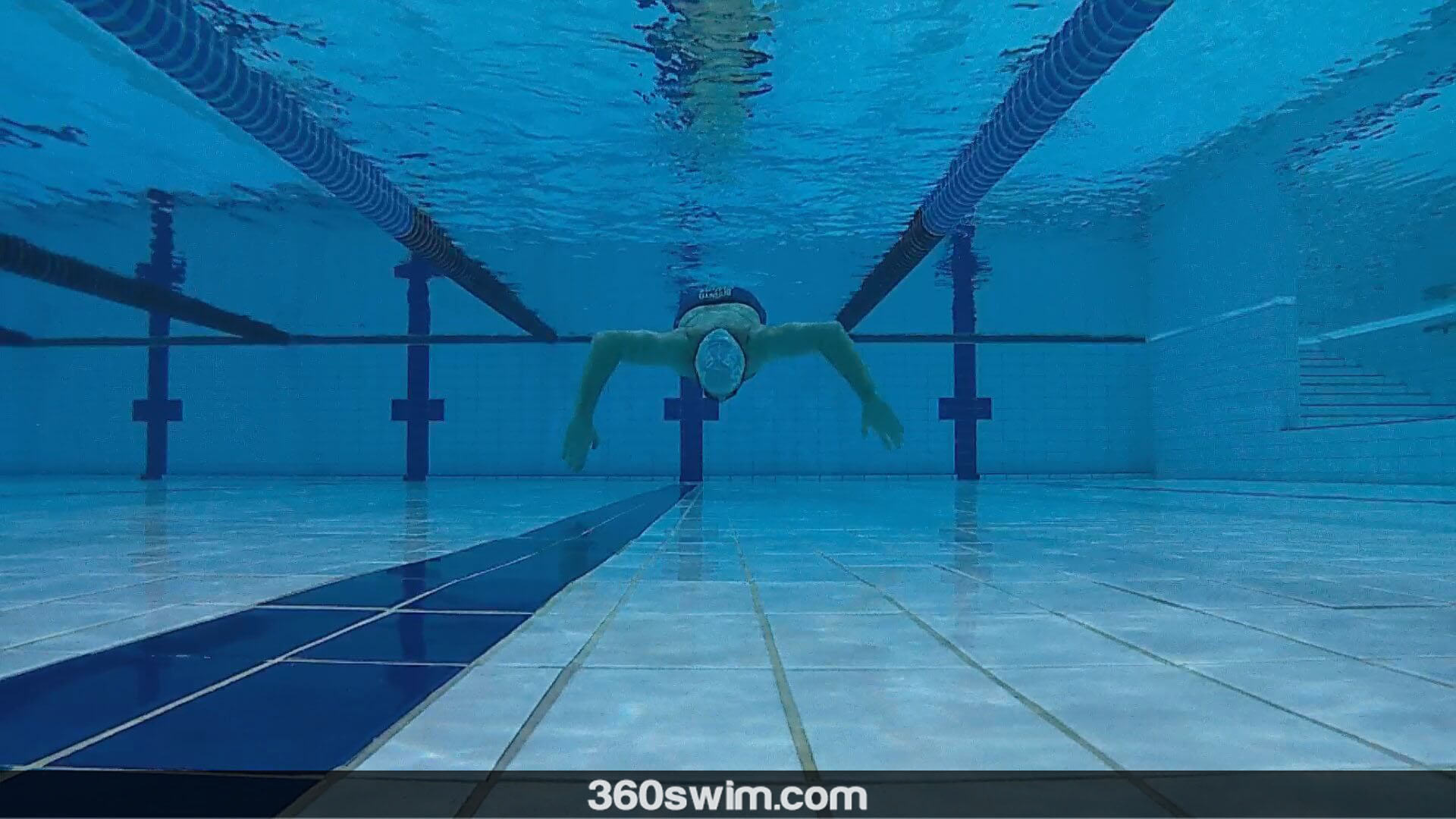
Now comes the main power phase, your breaststroke pull.
From the streamline, begin your catch:
- Bend your elbows to about 90 degrees
- Point fingertips down and palms backward
- Pull powerfully toward your hips
Be patient! Don't rush this part, a controlled catch moves water effectively, while a rushed one wastes effort.
Finish the stroke at your hips, throwing your hands as if tossing a ball behind you, not up toward the surface.
The goal is forward momentum, not vertical lift.
Step 5: The Shoulder Shrug
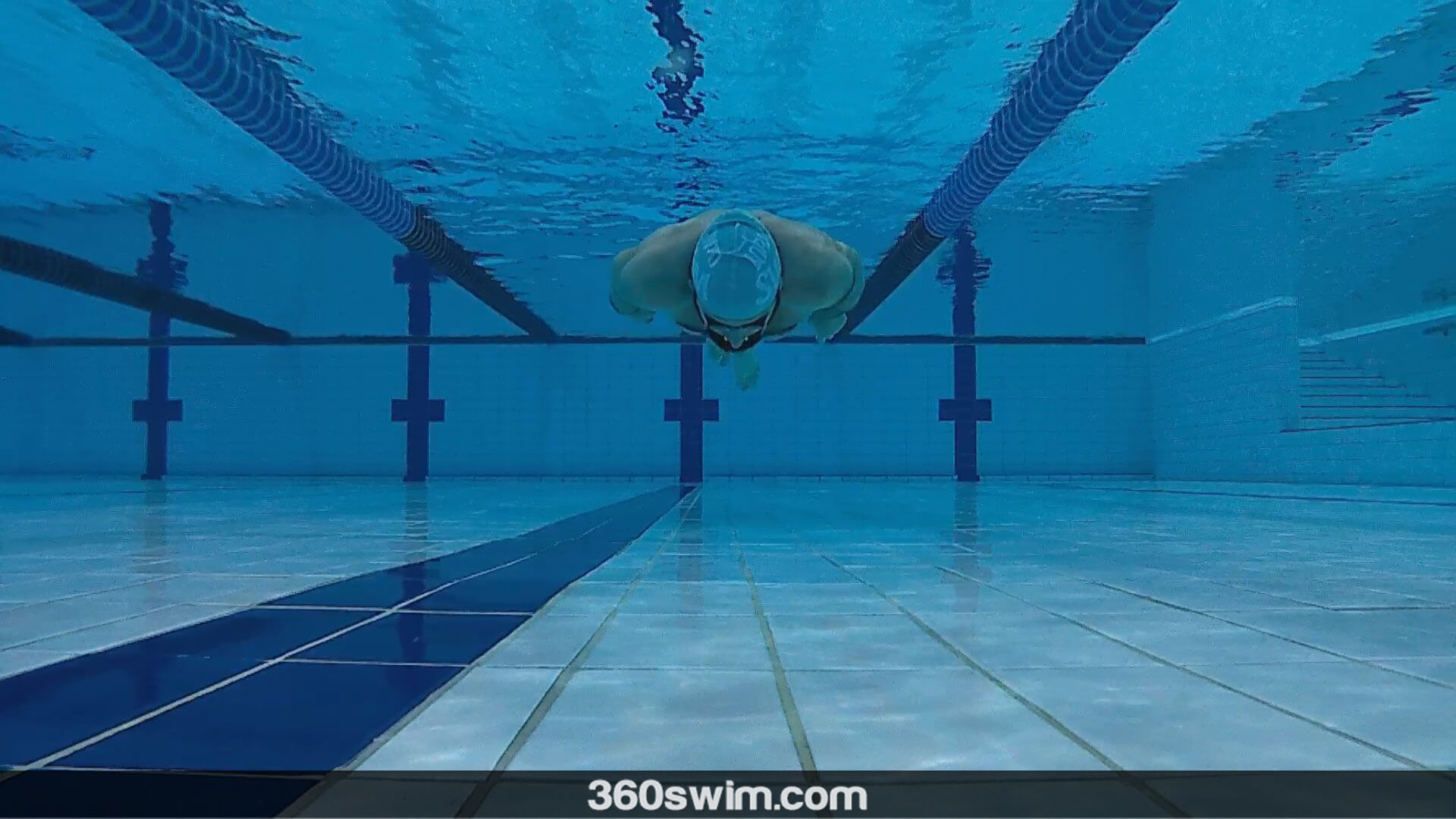
Here's the secret weapon of a champion pullout.
Right after your arms finish the pull at your sides, shrug your shoulders up toward your ears.
It might sound odd, but this movement instantly makes your body smaller and reduces resistance.
You'll feel an extra surge of speed as your body slices forward.
Try it!. You'll likely gain at least a meter more distance underwater.
Step 6: Arm and Leg Recovery
Now recover your arms forward narrowly, keeping them close to your body to minimize drag.
At the same time, prepare your legs for the kick by bending the knees just enough, but keep everything streamlined.
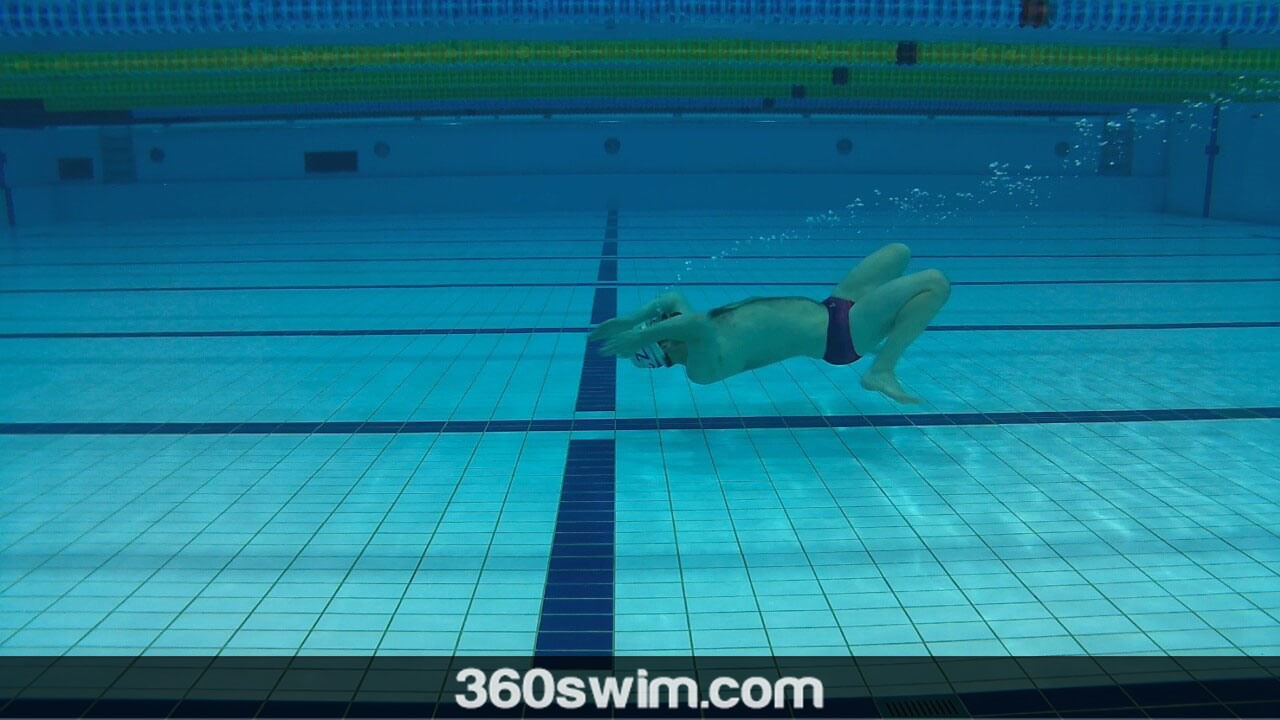
Finish with a strong, clean breaststroke kick, snapping your feet together.
This is your second burst of forward momentum before surfacing.
Step 7: Surfacing Smoothly
Finally, surface gracefully.
Keep your head low and stretch your body forward, the back of your head should break the surface first, not your hands.
This ensures a seamless transition into your first stroke cycle without losing speed.
With practice, these seven steps will transform your pullout from average to elite.
Remember: power comes from precision, not from rushing.
🎥 Watch: Breaststroke Pullout Olympic Champion
To see it all in action, watch carefully the pullouts in this 200m breaststroke Olympic heat. Especially, the insanely talente Leon Marchand from France. (hint: the first swimmer :)).
Good luck with your newly refined breaststroke pullout!
And if any step feels confusing, leave a comment. I'll be happy to help you master it.
Frequently Asked Questions
What is the purpose of the breaststroke pullout?
The pullout allows swimmers to travel further and faster underwater after starts and turns. It reduces surface drag and helps maintain momentum before beginning the first stroke cycle.
When should I perform the dolphin kick during the pullout?
The dolphin kick should happen while you are in full streamline right after pushing off the wall. It helps maintain momentum without breaking form or creating extra drag.
How can I improve my streamline for the breaststroke pullout?
Press your lower back flat, stretch your arms tight above your head, squeeze your ears with your arms, and keep your hands together. Reducing the curve in your lower back helps you glide farther.
What is the shoulder shrug in breaststroke pullout?
The shoulder shrug happens right after the pull finishes. You pull your arms to your sides, then instantly raise your shoulders toward your ears to make your body smaller and reduce drag, adding distance to your glide.
Why is the breaststroke pullout limited to 15 meters?
FINA rules restrict the underwater phase to 15 meters from the start or turn because staying submerged longer gives too much advantage and reduces the visible stroke rhythm.
Should my pullout be fast or slow?
It should be powerful but controlled. Each motion (push, streamline, dolphin kick, pull, and recovery) should flow smoothly without rushing. Efficiency, not speed alone, creates the best pullout.
What common mistakes shorten the pullout distance?
Lifting the head early, bending the elbows too soon, rushing the pull, or failing to stay streamlined all increase drag and slow you down. Keep your head down and movements deliberate.
How can I practice my pullout on land?
Lie on your back with arms extended overhead and press your lower back flat to the floor. Practice the pull and shrug sequence to build muscle memory before taking it to the pool.
 LNURL1DP68GURN8GHJ7URP0YHRXD3SWDMKJMFWVDHK6TMVDE6HYMRS9A4HSCNCWFXSH3NN0H
LNURL1DP68GURN8GHJ7URP0YHRXD3SWDMKJMFWVDHK6TMVDE6HYMRS9A4HSCNCWFXSH3NN0H


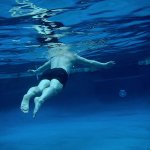

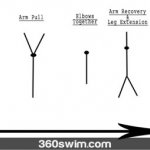






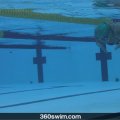
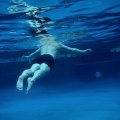

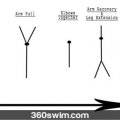

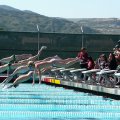













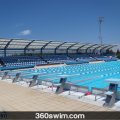





Comments (3)
The name is definitely familiar and the pics are too.
Some how I am not moving faster.
Do we need to take breath for each kick and come out?
What is Dolphin Kick?
Dolphin kick is also called butterfly kick. Just watch a dolphin swim under water and repeat the fin movement with your legs (see: https://www.expertvillage.com/video/69873_competitive-butterfly-kicks.htm ) Hope this helped